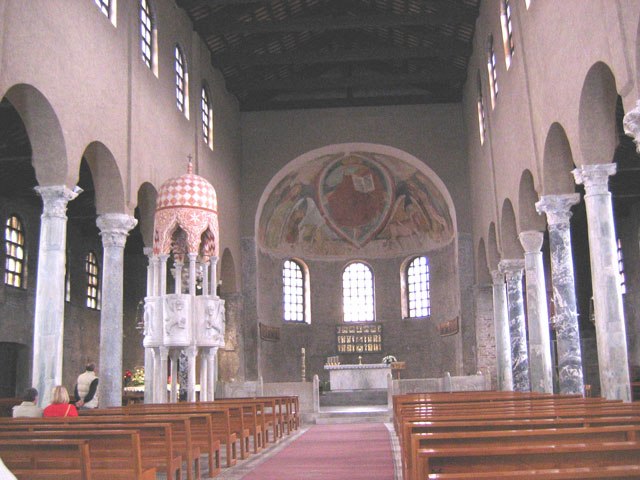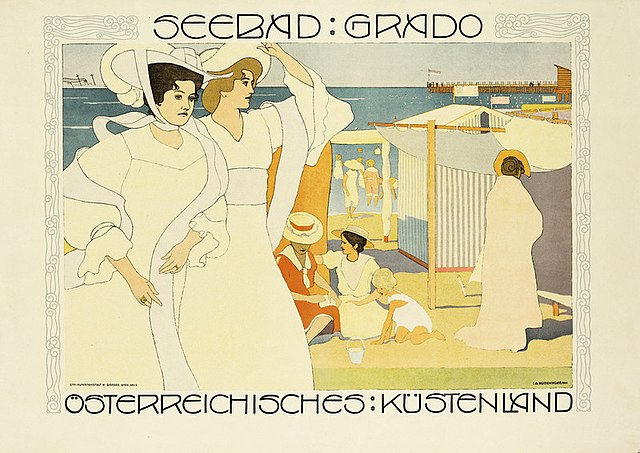Grado, Friuli Venezia Giulia
Grado is a town and comune (municipality) of 8,064 residents in the Regional decentralization entity of Gorizia in the north-eastern Italian region of Friuli-Venezia Giulia, located on an island and adjacent peninsula of the Adriatic Sea between Venice and Trieste. The territory of the municipality of Grado extends between the mouth of the Isonzo and the Adriatic Sea and the Grado Lagoon, and covers an area of about 90 square kilometers between Porto Buso and Fossalon. Characteristic of the lagoon is the presence of the casoni, which are simple houses with thatched roof used in the past by the fishermen of Grado, who remained in the lagoon for a long time, returning to the island of Grado only during the colder period of the year.
Grado, Friuli Venezia Giulia
Interior of the Basilica of Sant'Eufemia, Grado.
Josef Maria Auchentaller's famous 1906 art nouveau advertisement poster Seebad Grado
Many restaurants can be found in the oldest part of the town.
Venetian, wider Venetian or Venetan is a Romance language spoken natively in the northeast of Italy, mostly in Veneto, where most of the five million inhabitants can understand it. It is sometimes spoken and often well understood outside Veneto: in Trentino, Friuli, the Julian March, Istria, and some towns of Slovenia, Dalmatia (Croatia) and Bay of Kotor (Montenegro) by a surviving autochthonous Venetian population, and in Argentina, Australia, Brazil, Canada, Mexico, the United States and the United Kingdom by Venetians in the diaspora.
A sign in Venetian reading "Here Venetian is also spoken"
A street sign (nizioléto) in Venice using Venetian calle, as opposed to the Italian via
Lasa pur dir (Let them speak), an inscription on the Venetian House in Piran, southwestern Slovenia
Venetian sign in ticket office, Santa Lucia di Piave








